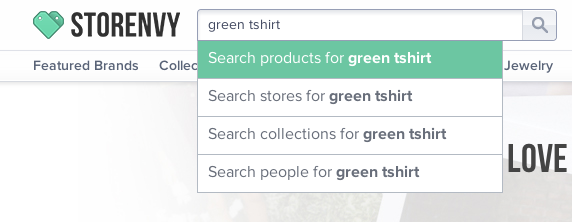SEO: Get your products found

No matter where you’re selling online, you want to make sure as many people can find you as possible. When you’re using an online marketplace, like Storenvy, to sell your products, you can expect to get extra sales that you didn’t drive through your own marketing efforts. However, you do still need to do what you can to make sure people are able to find your items within the marketplace. This is where SEO (Search Engine Optimization) comes in, and this will help your products come up in internet-wide search, like Google, just as much as within the marketplace.

Before you start work on this, you should read over this article on identifying keywords to start building a strong brand identity. These keywords will be vital to your SEO efforts. Once you have identified your keywords you’ll need to narrow down which ones are the most important to your brand because you’ll only be able to focus on a few if you want maximum impact. For SEO you’ll also need to think about which ones your potential customers are most likely to type into a search box. Be sure to also setup Google Analytics so you can keep track of which keywords are working the best, ditch ones which aren’t working so well, and experiment with others.
- Product Titles
Optimizing for search engines is all well and good but, at the end of the day, you’re still selling to real people so you have to optimize for them too. Your title should be short and it should make sense, it can’t just be string of assorted keywords. This means you can only include 2 or maybe 3 brand keywords and you must be sure to include words which state what the product actually is. For example, there’s no point listing a product as “Luxury handcrafted jewelry” because that’s too general and doesn’t tell anyone what it is. A better title would be “Handcrafted Sterling Silver Earrings.” Be aware that search engines will usually consider the words which come first to be the most relevant. - Product Descriptions
This is the part where you can really squeeze in those keywords but again, make sure it still makes sense and reads well to a normal person. There is no point getting your product found in search if your description makes your customer think twice about actually purchasing. You can divide your product description into different sections, allowing you to have 1 section that’s more story-based and where you can fit in keywords about your brand values or the type of customer you are aiming at. Then you can have another section for the facts about the product: raw materials, size etc. Don’t underestimate the factual section, if a shopper is looking for something specific they are very likely to include details, such as size, in their search. - Product Tags
Your labels or tags can, and should, just be a string of keywords and you really should be duplicating words you’ve already used in your title or description. This is not a place to shoehorn in some additional words in the hope of attracting different people. Search engines look at how many times a keyword is used in relation to the rest of the page to determine which words are most relevant and how to rank your product compared to others. If someone searches for “Pink” and product with “Pink” in the title, description and tags will show up much higher than a product where “Pink” is only used once. - Image Filenames
This is often overlooked but is really important, especially when you consider people doing an image search instead of a web page search. If you name your image file something that actually describes the image (such as the product title), search engines will associate those keywords with your image. Not only that, those words will contribute to the keywords for the rest of the page the image is on, boosting its rank for those words. If you are using a service which also allows you to set an additional image title and description after uploading it, make the most of that by filling in those fields as well.
If you feel like your products are getting lost in a sea of others, take a quick look over them and see which keywords crop up a lot. If you’re using the same keywords as everyone else, spend some more time thinking about what makes your brand different from all the others and switch over to using more words which describe that so you can start to stand out from the crowd.



